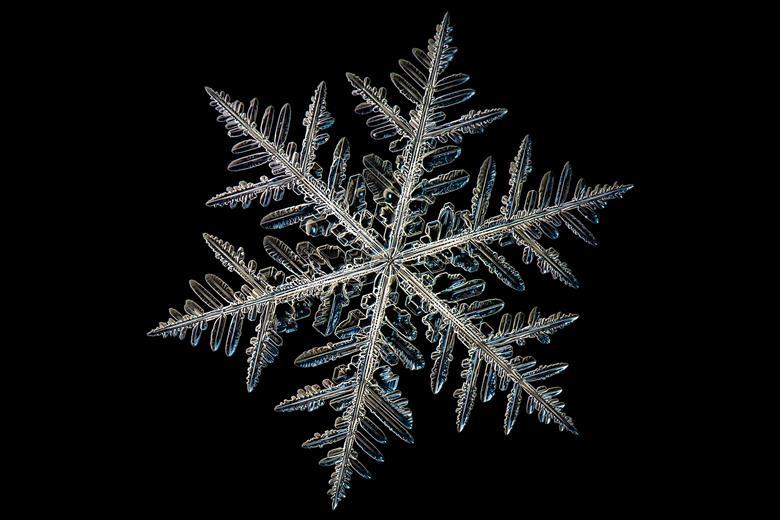Science
Related: About this forumExplainer: snowflakes
BY KATRINA KRÄMER 8 DECEMBER 2017
. . .
How do snowflakes form?
Two words: supercool and supersaturated. The air needs to be both to form snowflakes. It’s a delicate process and when it goes wrong you get things like hail, sleet or graupel.
Depending on the temperature, air can accommodate a specific amount of gaseous water – the hotter it is the more water vapour can be in the air. When the temperature drops, the water doesn’t necessarily always condense (form liquid droplets) or deposit (form solid particles) immediately; instead, air can reach a relative humidity above 100%, becoming supersaturated.
Water only freezes at 0°C if it has some incentive to do so. Tiny, microscopic bumps in the surface container the water is cooled in, or dust particles in supersaturated air, are usually provide enough this push. If this doesn’t happen, water becomes supercooled – remaining as liquid well below its freezing point. When supercooled liquid water is disturbed it freezes instantly and, in supersaturated air, this results in snowflakes.
While these seem like quite unlikely conditions to occur on a regular basis, luckily they happen quite often in those large aerosol heaps floating in the sky we call clouds. Inside snow clouds, supercooled water freezes around a dust particle to form the first tiny snow crystal. It then attracts more water from the supersaturated air around it, which crystallises into intricate shapes.

More:
https://www.chemistryworld.com/news/what-makes-a-snowflake-special/3008386.article
muriel_volestrangler
(101,385 posts)for a friend:
Kepler worked as the imperial astronomer for Emperor Rudolph II, who had neglected to pay the scientist's salary for some time. Lacking the necessary funds to buy an appropriate Christmas gift for a friend, Kepler decided to write the essay on the snowflake. After all, he asked rhetorically, what do astronomers and mathematicians "who have Nothing and receive Nothing" have to give, but Nothing?
...
When a snowflake alighted on Kepler’s coat as he crossed the Charles Bridge in Prague, he marveled at its perfect six-cornered symmetry. In his essay Kepler recounted thinking that the snowflake would be the perfect Christmas gift, “since it comes down from heaven and looks like a star.”
But why, he asks, do single snowflakes, before they become entangled with other snowflakes, always fall with six corners? Why do snowflakes not fall with five corners or with seven?
http://www.keplersdiscovery.com/SixCornered.html
The friend rejoiced in the name of Wacker von Wackenfels.